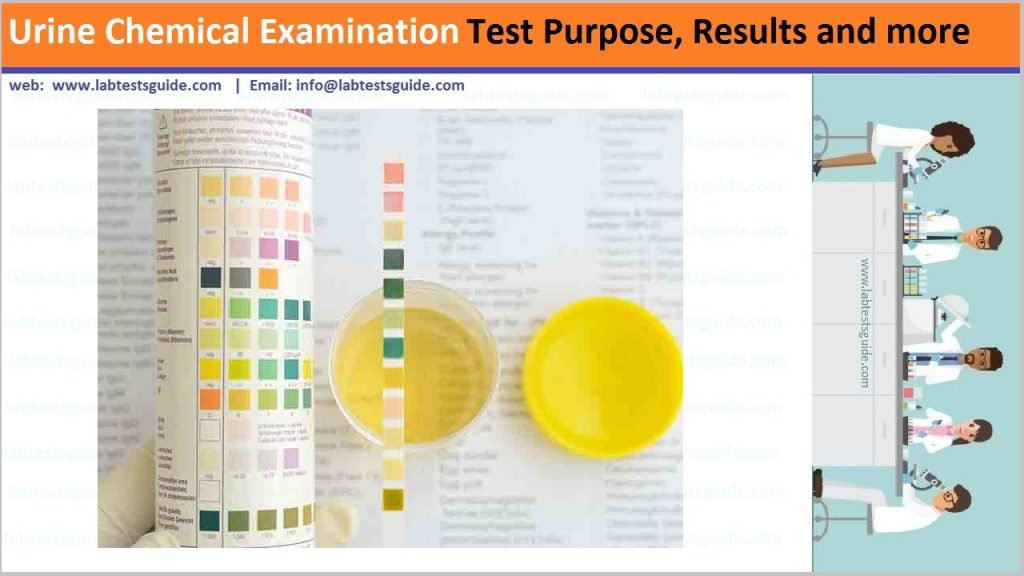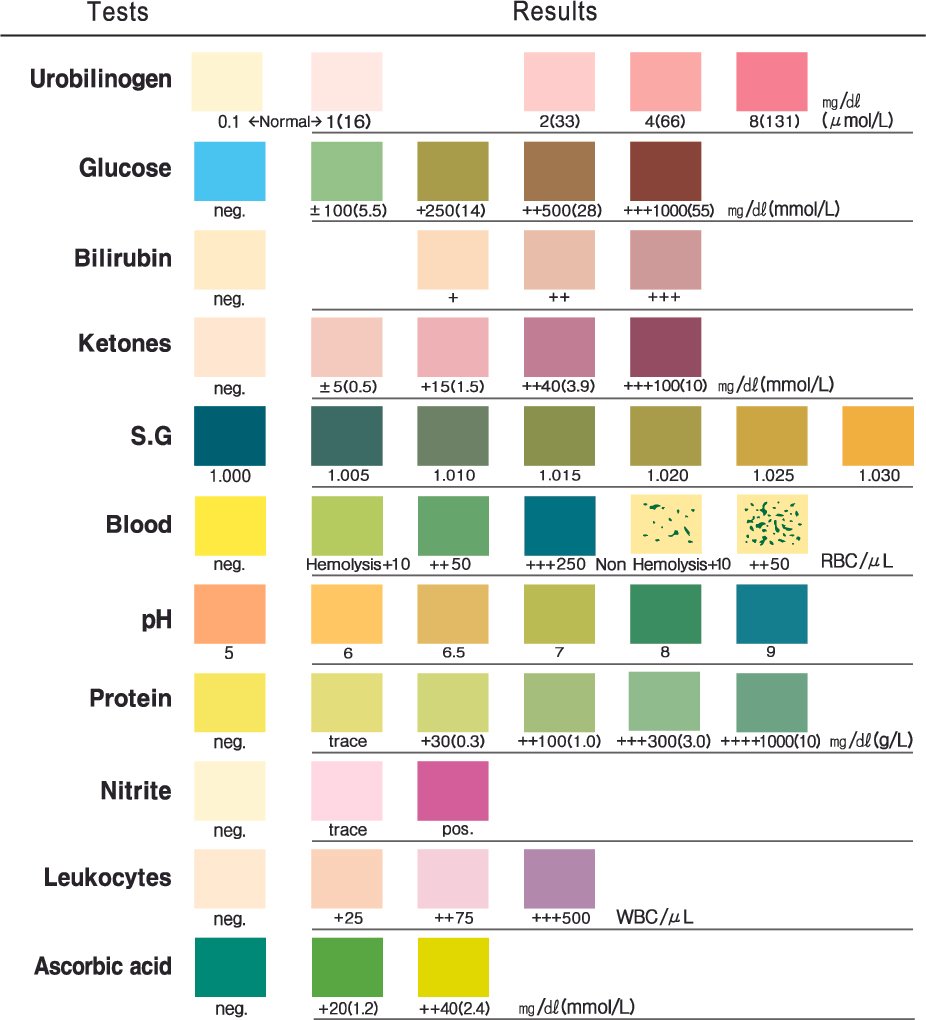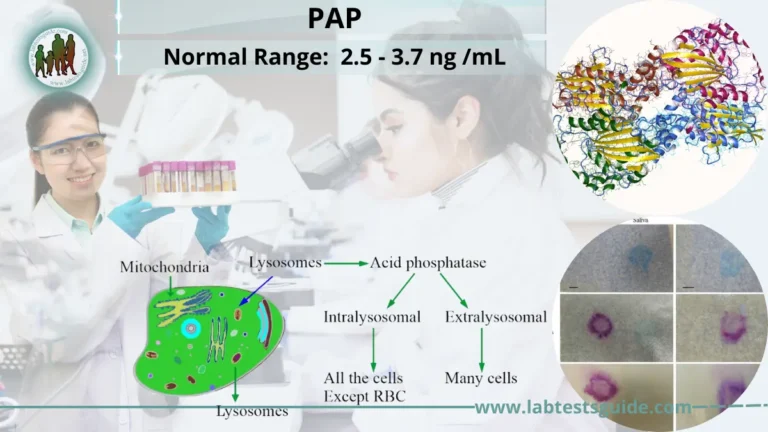A urobilinogen in urine test measures the amount of urobilinogen in a urine sample. Urobilinogen is formed from the reduction of bilirubin. Bilirubin is a yellowish substance found in your liver that helps break down red blood cells. Normal urine contains some urobilinogen. If there is little or no urobilinogen in urine, it can mean your liver isn’t working correctly. Too much urobilinogen in urine can indicate a liver disease such as hepatitis or cirrhosis. Read New Article
A urinalysis is a test of your urine. A urinalysis is used to detect and manage a wide range of disorders, such as urinary tract infections, kidney disease and diabetes.
A urinalysis involves checking the appearance, concentration and content of urine. Abnormal urinalysis results may point to a disease or illness.

Also Known as: Urine Test, Urine Analysis , Urine CE, Urine C/E, UCE, Urinalysis
Test Panel: Physical properties, Chemical Tests, Dipstick Tests, Microscopic Examination
Type of urine samples:
- Random sample:
This is a diluted urine sample and may give an inaccurate interpretation of patient health. But is best to do microscopy to evaluate WBC or RBC. - First Morning sample:
This is the best sample for microscopy and urine analysis. This is the concentrated urine because of urine remained throughout the night in the urinary bladder. This will contains an increased concentration of analytes and cellular elements. Urine must have remained in the bladder for 8 hours is considered as the first-morning sample. - Urine for sugar (Postprandial 2 hours):
Postprandial 2 hours sample collected after 2 hours of high carbohydrate diet. - Midstream clean catch urine:
This sample is needed for the culture and sensitivity of urinary infection. The patient is advised to clean the urethra, then discard the first few mL of urine. Now midstream of the urine is collected in the sterile container. - 24 Hours of a urine sample
- In this case, discard the first urine and note the time.
- Now collect urine in the container for 24 hours and put the last sample in the container.
- Refrigerate the sample.
- This 24 hours samples are needed for measuring urea, creatinine, sodium, potassium, glucose, and catecholamines.
- Suprapubic collection of the urine sample:
This is done in the patients who cannot be catheterized and the sample is needed for culture. This sample is collected by the needle. - Catheter collection of urine:
This is done by patients who are bedridden and can not urinate. - Pediatric urine sample:
In infants, special collection bags are made adherent around the urethra. Then urine is transferred to a container.
Urinary Urobilinogen
A urobilinogen in urine test measures the amount of urobilinogen in a urine sample. Urobilinogen is formed from the reduction of bilirubin. Bilirubin is a yellowish substance found in your liver that helps break down red blood cells. Normal urine contains some urobilinogen. If there is little or no urobilinogen in urine, it can mean your liver isn’t working correctly. Too much urobilinogen in urine can indicate a liver disease such as hepatitis or cirrhosis.

Why get Tested:
Your health care provider may have ordered this test as part of your regular checkup, to monitor an existing liver condition, or if you have symptoms of a liver disease. These include:
- Jaundice, a condition that causes your skin and eyes to turn yellow
- Nausea and/or vomiting
- Dark colored urine
- Pain and swelling in the abdomen
- Itchy skin
Normal Range:
- Random sample = < 1 mg/dL.
- 24 hours sample = 0.5 to 4 mg/dL.
Increased Urobilinogen is seen in:
- Cirrhosis due to:
- Alcoholic cirrhosis.
- Viral diseases.
- Chemicals.
- Biliary obstruction.
- Biliary tract infection, cholangitis.
- Hepatotoxic drugs e.g.aminosalicylic acid, Phenothiazine, and penicillin,
- Due to increased RBCs destruction:
- Hemolytic anemia.
- Pernicious anemia.
- Malaria.
- Drugs.
- Acute hepatitis.
- Pulmonary infarction.
- Hematoma.
- Excessive ecchymosis.
Decreased Urobilinogen is seen in:
- Gallstones.
- Biliary obstruction.
- Biliary tract infection (severe).
- Pancreatic cancer (head of the pancreas)
- Drugs e.g. Aspirin, Chloramphenicol, Insulin, phenytoin, Streptomycin, tetracycline, Methyldopa, and sulphonamide.
Table showing the presence of urine bilirubin and urobilinogen in various conditions:
| Test | Normal | Conjugated hyperbilirubinemia | Unconjugated hyperbilirubinemia | Hepatitis |
|---|---|---|---|---|
| Urine bilirubin | negative | positive | negative | positive |
| Urine urobilinogen | positive / negative | positive (+++) | negative | positive (+++) |
Related Articles:
Possible References Used







Hello,
I am reaching out to you in search of determining whether molecules urobilinogen and urobilin are present in sample. HILIC in negative mode should work. I have 10 samples for analysis.The samples are an extract from bacterial samples.
Could you offer this service? Price? Turnaround time? Or could you send me a quote? Thank you.
Looking forward to hearing from you.
Best,
Vivian Zou